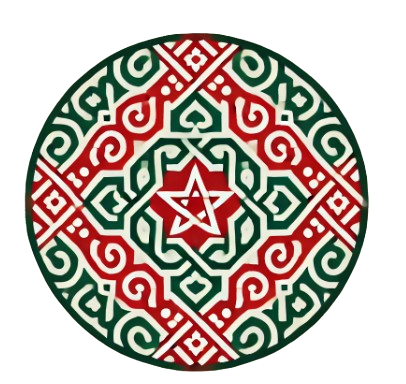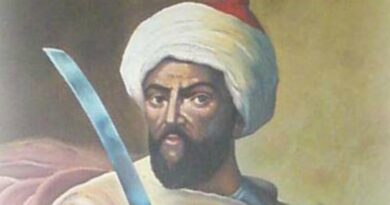Moroccan Amazigh Traditions: A Celebration of Indigenous Culture
The Amazigh, also known as Berbers, are the indigenous people of Morocco, with a history that predates Arab-Islamic influence by thousands of years. Their rich traditions are deeply rooted in Morocco’s cultural identity, especially in the High Atlas Mountains, the Rif, and the Souss region. Amazigh traditions reflect a strong connection to nature, community, and spirituality, preserved through language, art, and customs.
1. Language and Oral Traditions
- Language: The Amazigh language, Tamazight, is an official language of Morocco, written in the ancient Tifinagh script. It is a cornerstone of Amazigh identity, passed down through generations.
- Storytelling: Oral storytelling is a vital tradition, often performed around a communal fire. These tales, rich in mythology and moral lessons, preserve the history and values of the Amazigh people.
2. Amazigh Art and Symbolism
- Jewelry: Amazigh women wear ornate silver jewelry adorned with intricate geometric patterns and colored stones. Each piece often symbolizes protection, fertility, or social status.
- Textiles: Handwoven carpets and rugs, featuring bold geometric patterns and natural dyes, are a hallmark of Amazigh artistry. They are both functional and symbolic, often telling personal or communal stories.
- Tattooing: Traditional tattoos, especially on women, once served as symbols of beauty, protection, and identity. While the practice has declined, its motifs remain an important part of Amazigh visual culture.
3. Festivals and Celebrations
- Yennayer (Amazigh New Year): Celebrated on January 12th or 13th, Yennayer marks the start of the Amazigh agricultural calendar. Families gather for feasts featuring couscous and other traditional dishes, accompanied by singing, dancing, and storytelling.
- Marriage Ceremonies: Amazigh weddings are elaborate, multi-day events filled with music, dance, and rituals. The bride often wears a traditional dress called taksimt, adorned with silver jewelry, while henna designs are applied to her hands and feet.
4. Music and Dance
- Ahidous: This traditional Amazigh dance is performed in a circular formation, accompanied by rhythmic drumming and poetic chants. It is a communal expression of joy, often seen at weddings and festivals.
- Rwais: In the Souss region, Rwais refers to a group of traveling Amazigh musicians who perform poetic songs with traditional instruments like the rebab (a spike fiddle) and loutar (a stringed instrument).
- Guedra Dance: This spiritual dance, performed by women in the Sahara, is a form of prayer and a celebration of unity and nature.
5. Cuisine
Amazigh cuisine is closely tied to the land, emphasizing simple, hearty dishes made from locally sourced ingredients:
- Tagine: A staple dish named after the earthenware pot in which it is cooked, featuring meat, vegetables, and aromatic spices.
- Amlou: A spread made from almonds, argan oil, and honey, often served with bread.
- Barley Bread: Known as aghroum, this traditional bread is baked in communal ovens or directly on hot stones.
6. Architecture
- Kasbahs: Fortified homes and villages made of mudbrick, often found in the High Atlas and southern Morocco, reflect the Amazigh’s ingenuity in adapting to their environment.
- Agranaries: Known as igoudar, these communal granaries are used for storing crops and valuables, symbolizing collective ownership and cooperation.
7. Spiritual Practices
- Connection to Nature: Amazigh spirituality historically revolved around nature worship, with reverence for mountains, rivers, and the sun. While most Amazigh people today practice Islam, elements of their ancestral beliefs persist in cultural rituals and festivals.
- Marabout Shrines: Many Amazigh communities honor saints or marabouts, whose shrines are visited for blessings and spiritual guidance.
8. Clothing
- Tachlith: A traditional Amazigh dress, often brightly colored and decorated with embroidery or silver ornaments.
- Woolen Capes: In colder regions, capes made from woven wool are a practical yet culturally significant garment.
9. Social Organization and Values
- Community: Amazigh society emphasizes collective responsibility and cooperation. Traditional councils, known as jemaa, resolve disputes and make decisions.
- Hospitality: A core value, hospitality is extended to guests with offerings of tea, food, and a warm welcome.
10. Preservation of Amazigh Culture
In recent years, there has been a resurgence of Amazigh pride and efforts to preserve their heritage:
- Tifinagh Script: Promoted in schools and public spaces as a symbol of Amazigh identity.
- Cultural Festivals: Events like the Imilchil Marriage Festival and Timitar Festival in Agadir celebrate Amazigh music, dance, and traditions.
- Amazigh Day: Observed annually to honor the contributions of Amazigh culture to Morocco’s national identity.
Amazigh traditions are a vital thread in Morocco’s cultural fabric, embodying the resilience, creativity, and unity of its people. From their language and art to their music and communal values, the Amazigh continue to celebrate their heritage while enriching Morocco’s broader cultural identity.
Amazigh Storytelling Traditions: Guardians of Oral Heritage
Storytelling is a cornerstone of Amazigh culture, serving as a means to preserve history, teach moral lessons, and entertain. Passed down through generations, these oral traditions are deeply rooted in the Amazigh way of life, reflecting their connection to nature, spirituality, and community. Amazigh storytelling is not just a form of entertainment but a living archive of cultural memory.
1. The Role of Storytelling
Storytelling holds a vital place in Amazigh communities, especially in rural areas where oral traditions remain strong. It serves several key functions:
- Education: Stories are a medium to teach young generations about values, ethics, and social norms.
- Preservation: Oral narratives preserve the history, mythology, and cultural identity of the Amazigh people.
- Entertainment: Stories provide communal entertainment during gatherings, often around a fire in the evening.
2. Types of Amazigh Stories
Amazigh storytelling encompasses a variety of genres, each with distinct themes and purposes:
a. Folktales
- Mythical Origins: Folktales often explore the creation of the world, the origins of natural phenomena, or the deeds of legendary ancestors.
- Examples: Stories of great Amazigh queens like Kahina, who symbolize strength and leadership, or mythical creatures that teach caution and bravery.
b. Fables
- Animals as Characters: Fables feature animals like jackals, foxes, and birds that embody human traits. These stories convey moral lessons about honesty, cunning, or kindness.
- Themes: The triumph of cleverness over strength is a common motif.
c. Historical Narratives
- Preserving History: Stories recount significant events, such as battles, migrations, or the establishment of communities.
- Heroic Figures: Tales of Amazigh warriors and leaders celebrate their resilience and bravery.
d. Love and Tragedy
- Romantic Tales: Stories of star-crossed lovers, like those celebrated in the Imilchil Marriage Festival, highlight themes of love, sacrifice, and destiny.
- Tragic Endings: Many tales carry bittersweet endings, reflecting the complexities of life.
3. The Storyteller’s Role
The storyteller, or “ahnay” in Tamazight, is a revered figure in Amazigh society. Their skill lies in their ability to weave words, engage audiences, and adapt the narrative to suit the occasion.
- Performance: Storytellers use dramatic gestures, changes in tone, and rhythmic patterns to captivate their audience.
- Improvisation: Ahnay often improvise details to keep stories fresh and relevant, making each retelling unique.
- Transmission: Storytellers play a critical role in ensuring the survival of oral traditions by passing them on to younger generations.
4. Symbolism and Themes
Amazigh storytelling is rich in symbolism, with recurring themes that reflect their worldview:
- Nature: The mountains, rivers, and deserts of Morocco are often personified or revered in stories, reflecting the Amazigh connection to the natural world.
- Spirituality: Tales are infused with elements of Amazigh spirituality, such as reverence for ancestors and the presence of mystical forces.
- Community Values: Stories emphasize the importance of family, community, and collective responsibility.
5. Storytelling Settings
Storytelling is a communal activity that takes place during significant events or in intimate gatherings:
- Evening Gatherings: Families and neighbors often gather around a fire to share tales, creating a sense of unity and belonging.
- Festivals: Amazigh festivals, such as Yennayer (Amazigh New Year) or local moussems, are prime occasions for storytelling performances.
- Rites of Passage: Stories are told during weddings, births, or other rites of passage to impart wisdom and celebrate cultural heritage.
6. Tools of Storytelling
- Rhythm and Rhyme: Many stories are delivered in poetic or rhythmic form, making them easier to remember and more engaging.
- Music: Instruments like the rebab or bendir drum often accompany storytelling, enhancing the performance and evoking emotional responses.
7. Modern Adaptations
While traditional storytelling faces challenges from modern media, efforts are being made to preserve and adapt Amazigh narratives:
- Festivals and Events: Cultural festivals like the Timitar Festival in Agadir celebrate Amazigh storytelling alongside music and dance.
- Documentation: Organizations and scholars are recording oral stories to preserve them for future generations.
- Integration into Education: Some schools and cultural programs incorporate Amazigh storytelling to promote linguistic and cultural pride.
8. Global Influence
Amazigh storytelling has influenced Moroccan literature and cinema, inspiring works that bring these traditions to a global audience. Themes of resilience, community, and harmony with nature resonate universally.
Amazigh storytelling is more than a cultural tradition; it is a living, breathing testament to the values and history of Morocco’s indigenous people. Whether recounting the deeds of heroes, the mysteries of nature, or the lessons of life, these stories remain a vital thread in the cultural fabric of Morocco, connecting past generations with the present and future.




